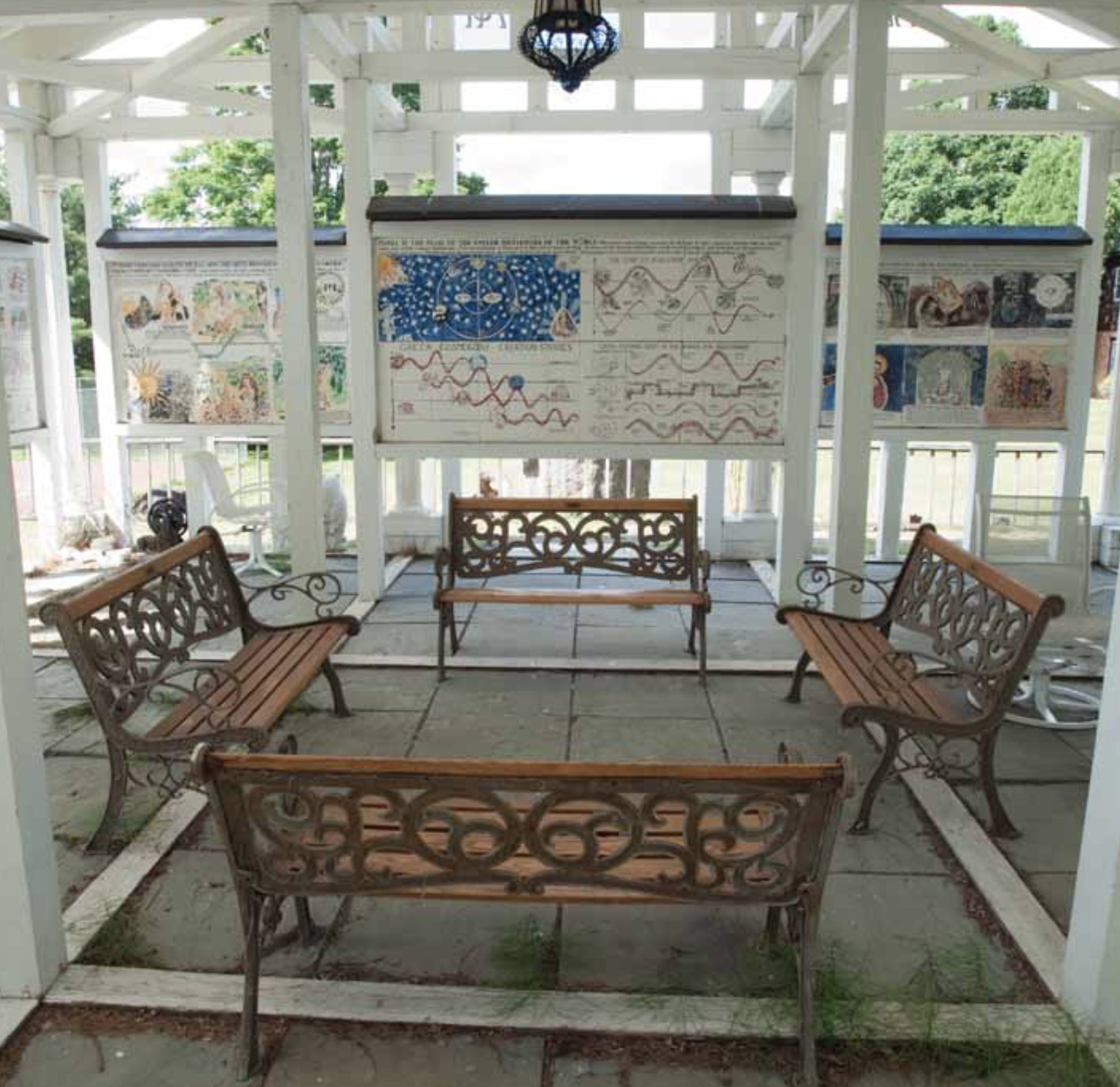The Delivery of our Emotional Education Program
Welcome to the Museum of the Creative Process at the Wilburton Inn, where Dr. Albert Levis and his children, Melissa Levis, MFA, and Max Levis, PhD, invite you to experience a living campus of art, science, and psychology.
Dr. Levis, a psychiatrist and author of ten volumes on the creative process, has installed a unique series of exhibits integrating art, science, emotions, religion, and mythology. Together, they reveal the Creative Process as a scientific mechanism of conflict resolution—a breakthrough that transforms emotional energy into moral growth.
Through this program, visitors explore how art presents the evidence of science, and how understanding that science becomes the foundation for emotional education.
UNDERSTANDING THE CREATIVE PROCESS IS THE KEY TO TRAINING AI INTO BECOMING THE ARTIFICIAL GENERAL INTELLIGENCE, THE MORAL AUTHORITY.
1. From Art to Science: Understanding the Creative Process
We begin by shifting from the content of stories to what is universal in all stories—their plot, the Creative Process itself. This process reflects the unconscious transforming emotional energy through two natural phenomena of science—catharsis (energy release) and homeostasis (restoration of balance).
This transformation unfolds as an emotional dialectic, a six-stage “rollercoaster” of emotions that leads from conflict to resolution. Three formal operations—reciprocity, negation, and correlation—guide this evolution, turning passivity, antagonism, and alienation into mastery, cooperation, and mutual respect.
Like chlorophyll transforming sunlight into life, the unconscious transforms conflict into moral growth.
2. The Museum Exhibits: Discovering Psychology as a Science
The Sculptural Trail in the History of Love
This outdoor exhibit retraces the evolution of world religions as progressive discoveries of conflict resolution—each restructuring family and social roles to improve the human condition.
The Sanctuary of Wisdom
Two complementary exhibits—the Wizard of Oz Metaphors and the Metaphoria Murals—illustrate psychology’s four core disciplines: epistemology, diagnosis, assessment, and morality. The outer panels visualize these principles through story’s metaphors, while the inner murals show how individuals and cultures move through the six-role emotional process toward harmony.
The Gorski Retrospective
Over one hundred canvases by figurative expressionist Henry Gorski trace the artist’s emotional evolution. His works are organized as cycles of conflict resolution, revealing the same six-role emotional pattern expressed across art and life.
3. Creativity for Self-Discovery: Healing Ourselves
Participants complete the Conflict Analysis Battery (CAB)—a self-assessment revealing one’s personality pattern and personal method of emotional conflict resolution. Through this process, creativity becomes a tool for self-knowledge, healing, and happiness.
Group sharing deepens these insights, fostering empathy, authenticity, and personal growth.
4. Sociology of Conflict Resolution: Integrating Religions into Moral Science
In this session, participants explore how ancient civilizations—from Mexico and Mesopotamia to Greece and India—developed moral frameworks as discoveries of the same scientific principles of conflict resolution.
Through this lens, religions once seen as separate “moral monopolies” become reconciled within one universal Moral Science grounded in cooperation, moderation, and mutual respect.
5. Political Relevance of the Moral Science
Finally, participants are invited to apply these insights to today’s world. We analyze the moral paradigms and personality types that shape contemporary politics, exploring how societies can navigate division by returning to the universal science of conflict resolution.
The program closes with discussion and reflection—how we can each contribute to a culture of emotional literacy, moral clarity, and peace.







